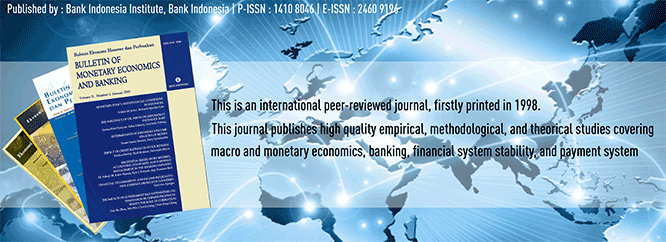
Document Type
Article
Abstract
By developing a long-run macro structural model, The Structural Cointegrating Vector Autoregression (VAR), the optimality principle of monetary policy response in Indonesia is formulated. It accommodates not only long-run policy response and short-run dynamic errorcorrection mechanism, but also specific shocks emerged due to structural changes in the economy. In that context, the generated policy response basically reflects the optimal response of a “state-contingent rule”, different from common simple policy rules, such as Taylor rule and McCallum rule. This study captures several important aspects related to the implementation of “state-contingent rule” as an optimal monetary policy in Indonesia, namely: (i) the superiority of interest rate as a policy variable, or an operational target, against monetary base, (ii) the identification of monetary policy lag which is estimated averagely one-and-a half year, and (iii) the sub optimality of central bank monetary policy response, attributed by an over tight or loose policy response.JEL Classification: C32, E52Keywords: Kebijakan Moneter di Indonesia, Respon Kebijakan Moneter, Structural Cointegration Vector Autoregression(VAR).
Recommended Citation
M. Juhro, Solikin
(2008)
"RESPON KEBIJAKAN MONETER YANG OPTIMAL DI INDONESIA: The State-Contingent Rule?,"
Bulletin of Monetary Economics and Banking: Vol. 10:
No.
4, Article 3.
DOI: https://doi.org/10.21098/bemp.v10i4.229
Available at:
https://bulletin.bmeb-bi.org/bmeb/vol10/iss4/3
First Page
303
Last Page
336
Creative Commons License

This work is licensed under a Creative Commons Attribution-NonCommercial 4.0 International License
Country
Indonesia
Affiliation
Bank Indonesia







